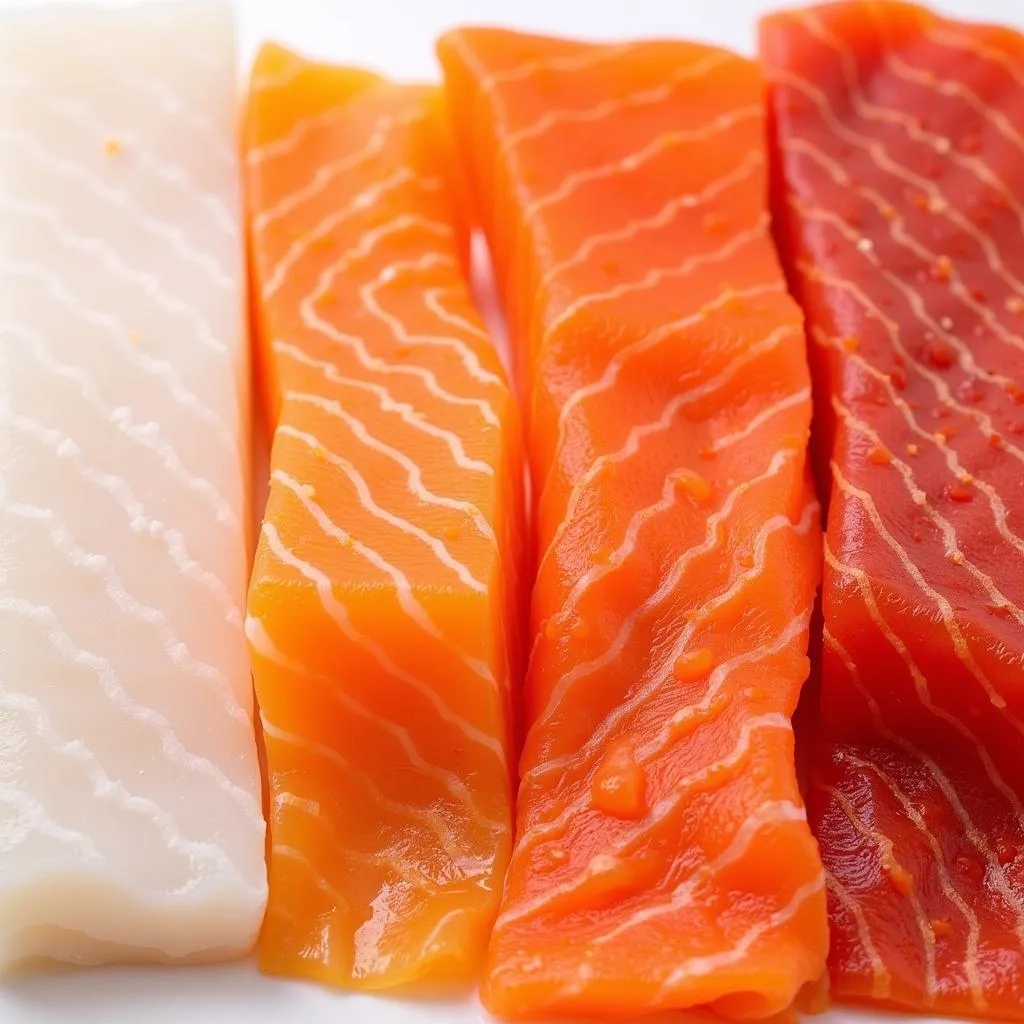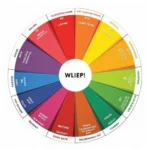Salmon, the beloved fish renowned for its delicate flavor and vibrant hue, often evokes images of a striking pink-red flesh. However, the color of salmon in its natural state is a subject of much intrigue and can vary considerably depending on a fascinating interplay of factors.
Decoding the Silver Secret: The Natural Hues of Wild Salmon
Wild salmon, in their pristine habitat, typically sport a shimmering silver exterior with subtle dark spots. This silvery sheen, derived from guanine crystals embedded in their scales, serves a vital purpose. The reflective quality of the scales acts as camouflage, effectively blending them into their aquatic surroundings, making them less vulnerable to predators. This natural camouflage is particularly important during their time in the ocean, where they face threats from larger fish, marine mammals, and birds of prey.
The Astaxanthin Effect: Unveiling the Pink-Red Pigmentation
The characteristic pink-red flesh commonly associated with salmon arises from their diet, specifically the consumption of astaxanthin. Astaxanthin is a powerful carotenoid pigment found in various organisms, including algae and krill. As salmon consume these organisms, astaxanthin accumulates in their muscle tissue, imparting the vibrant pink-red hue that we recognize. The intensity of this color can vary depending on the amount and type of astaxanthin-rich food in their diet. Sockeye salmon, for instance, are known for their particularly intense red flesh due to their high consumption of krill.
Farmed Salmon: A Closer Look at Color Control
In contrast to their wild counterparts, farmed salmon typically exhibit a more consistent pink-red color. This is largely attributed to the controlled diet they receive in aquaculture facilities. Farmers often supplement their feed with astaxanthin-rich ingredients, such as synthetic astaxanthin or natural sources like krill meal, to achieve the desired color. What color should salmon be explores the nuances of salmon color and consumer preferences.
The Color Spectrum of Salmon: From White to Red
The color of salmon flesh can actually span a spectrum from white to deep red. This variation is influenced by several factors, including species, diet, and even the stage of their life cycle. Some salmon species, like Chinook or King salmon, naturally possess a paler flesh even with a diet rich in astaxanthin. On the other hand, certain species like Sockeye and Coho salmon are genetically predisposed to store higher levels of astaxanthin, resulting in a more vibrant red color.
 Salmon Fillets with Different Colors
Salmon Fillets with Different Colors
Does Color Indicate Nutritional Value?
While the color of salmon is often associated with its flavor and quality, it’s important to note that color alone is not a reliable indicator of nutritional value. Both wild and farmed salmon are excellent sources of protein, omega-3 fatty acids, and other essential nutrients.
What Color Are Shrimp?
The color of shrimp, similar to salmon, can vary depending on the species and their environment. For a comprehensive exploration of shrimp coloration, you can read what color are shrimp.
Expert Insights: A Glimpse into Salmon Coloration
“The fascinating world of salmon coloration is a testament to the intricate connection between diet, genetics, and the environment,” says Dr. Sarah Jones, a marine biologist specializing in fish pigmentation. “Understanding these factors allows us to appreciate the diversity and complexity of these remarkable creatures.”
Conclusion: A Colorful Symphony of Nature
The natural color of salmon is a captivating story that unfolds from the depths of the ocean to our plates. From the shimmering silver of wild salmon to the vibrant pink-red hues influenced by astaxanthin, the color of salmon reflects a remarkable interplay of nature’s palette. Whether you prefer the subtle elegance of wild salmon or the consistent pink-red of farmed varieties, understanding the factors that influence their color can enhance our appreciation for this remarkable fish.
FAQ
-
Why is wild salmon typically silver? Wild salmon’s silver scales act as camouflage, reflecting light to blend in with their surroundings.
-
What makes farmed salmon pink-red? Farmed salmon are fed a diet supplemented with astaxanthin, a pigment that gives them their characteristic color.
-
Does salmon color affect its taste? While color can be associated with certain flavor profiles, it’s not a definitive indicator of taste.
-
Is salmon with paler flesh less nutritious? No, both pale and red salmon are excellent sources of nutrients.
-
What other factors influence salmon color? Species, diet, and the stage of their life cycle can all impact salmon color.
Salmon Color and Your Culinary Creations:
If you have questions about the best salmon for your recipes or need advice on achieving the perfect salmon dish, don’t hesitate to contact us. Our team at Color Box Hà Nội is dedicated to providing you with expert guidance and inspiration for all your culinary endeavors.
Call us: 0373298888
Email: SEO.backlink@gmail.com
Visit our store: 86 Cầu Giấy, Hà Nội
We’re available 24/7 to assist you!

